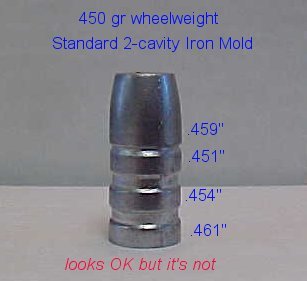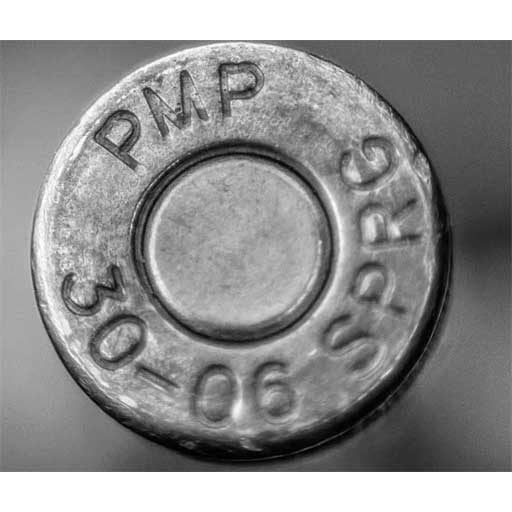Michael
Active Member. Uh/What
I have a few molds that continually give me grief. Just forward of the front driving band in the same place, I get a sunken area. It is uniform from one bullet to the next, and is quite visible. Usually it is in just foward of the front driving band on the bore ride portion to about half way up from the forward driving band, sometimes it takes in the forward edge of the driving band as well.
The way I figure it either the mold or the melt is too hot or too cool, singularly or in combination. I usually cast at around 750. The main culprits when it happens are longer for caliber bullets ie 311399, 25-120-SP, 24-95-SP, 311284, etc. Most of the bullets are mildly frosty, especially the sunken area on the bullet, otherwise they look good with good fill out on bands and bases. The alloy is 4:1 COWW:Lino. When I cast I run 2 molds of similar weight, dump and fill the first one, put it down, grab the second dump and fill, grab the first, repeat. The molds sit on a hot plate while waiting and I use a RCBS bottom pour. Could be my casting cadence as well, at any rate I need to be doing something different.
Appreciate the input,
Michael.
The way I figure it either the mold or the melt is too hot or too cool, singularly or in combination. I usually cast at around 750. The main culprits when it happens are longer for caliber bullets ie 311399, 25-120-SP, 24-95-SP, 311284, etc. Most of the bullets are mildly frosty, especially the sunken area on the bullet, otherwise they look good with good fill out on bands and bases. The alloy is 4:1 COWW:Lino. When I cast I run 2 molds of similar weight, dump and fill the first one, put it down, grab the second dump and fill, grab the first, repeat. The molds sit on a hot plate while waiting and I use a RCBS bottom pour. Could be my casting cadence as well, at any rate I need to be doing something different.
Appreciate the input,
Michael.
Last edited:


